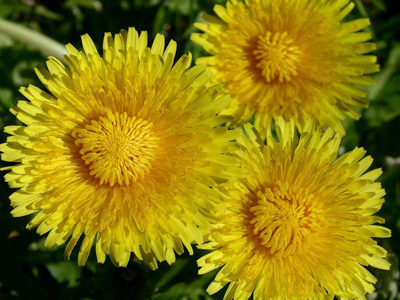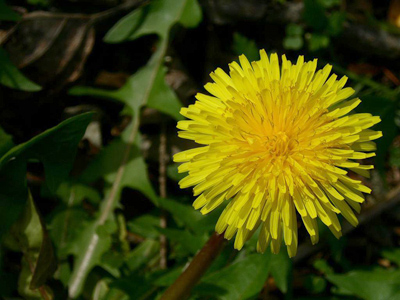Plant Identification: A Practical Approach

Take on the challenge of plant identification and you might feel a little overwhelmed! Any given area can contain hundreds of different species. Plants, especially wildflowers, come in a high diversity of colors, shapes, sizes, textures and even smells.
To effectively identify plants in the field, a simple method based on easily observable and comparable characteristics is required. One such system is "Newcomb's Method" outlined in Newcomb's Wildflower Guide by Lawrence Newcomb. This straightforward approach to plant identification is used in many of Alderleaf's courses.
Newcomb's Method is easy to learn and is based on three easily observed plant parts. Despite being written for primarily the central and northeastern regions of North America, the majority of plants found in North America are included. This plant identification method trains your eye to recognize important plant characteristics. Using Newcomb's Wildflower Guide in conjunction with a local plant book (for cross-referencing) is one of the most effective systems for quickly identifying plants.
Breaking it Down
Identifying plants using Newcomb's Method involves looking at the flower type, the plant/branching type, and the leaf type. This system uses a series of questions to guide you towards species identification. The questions are as follows:
For the flower type:
- Is the flower regular (radially symmetrical - which means symmetrical in any way it can be divided across the center, like a sunflower) (most flowers fall into this category); or is the flower irregular (only symmetrical when divided one way, such as a mint or pea flower); or are the flower parts indistinguishable (too small to see)?
- If regular, how many petals or similar parts does it have?
For the plant/branching type:
- Is the plant a wildflower, or a woody shrub or vine?
- If a wildflower, is it without leaves; or if it has leaves, are they all at the base of the plant (basal); or are they arranged singly on the stem (alternate); or are they opposite one another in pairs or whorls (whorled means many leaves coming off in different directions from the same area of the stem, like cleavers)?
For the leaf type:
- Are the leaves entire (smooth-edged), or are they toothed, or lobed (split into sections), or divided (separated into leaflets off the same stem)?
Each answer within these categories is assigned a number, which when combined will give you a 3 digit code. This code will bring you to a section of the locator key in Newcomb's Wildflower Guide, which will further guide you in your process of plant identification. The possible answers and associated numbers are as follows:
For the flower type:
1. Irregular flowers
2. Flowers with 2 regular parts
3. Flowers with 3 regular parts
4. Flowers with 4 regular parts
5. Flowers with 5 regular parts
6. Flowers with 6 regular parts
7. Flowers with 7 or more regular parts
8. Flowers parts indistinguishable
For the plant/branching type:
1. Wildflowers with no apparent leaves
2. Wildflowers with basal leaves only
3. Wildflowers with alternate leaves
4. Wildflowers with opposite or whorled leaves
5. Shrubs
6. Vines
For the leaf type:
1. No apparent leaves at all
2. Leaves that are entire (smooth-edged)
3. Leaves that are toothed or lobed
4. Leaves that are divided
Be More Prepared For Your Next Outdoor Adventure!

Don't leave home without knowing these six essential survival skills. Our free survival mini guide reveals the strategies of:
- Shelter & fire to prevent the number one cause of death
- Obtaining clean water to avoid life-threatening dehydration
- Common wild survival foods and other critical skills!

Example of how to use this plant identification method:

Imagine for a moment you are looking at a dandelion (pictured above). Now imagine that this is your first time looking at this plant, you do not know what it is, and you hope to identify it using Newcomb's Method.
We start by looking at the flower. Is the flower regular, irregular, or are the flower parts indistinguishable? And if regular, how many petals or similar parts do we see?
We look at the flower and see that it is radially symmetrical (regular) and has more than 7 regular parts. Our first digit is then the number "7".
Moving forward, we ask is it a shrub or a vine? A shrub is a plant with a woody stem that is permanently above the ground, but at maturity is under about 10 feet high. While a vine is a plant with a long, trailing, climbing, or twining stems over two feet or more.
Our plant is not a woody shrub nor a vine, it is a wildflower.
Next we ask, since it is a wildflower, is it without leaves, or if it has leaves, are they all at the base of the plant, or are they arranged singly on the stem (called alternate), or are they arranged in pairs (opposite) or in circular clusters (whorled)?
The leaves of our plant are found only at the base of the plant (called basal) and not on the flowering stalk. So that gives us a number "2" for this category.
After that, we ask about the type of leaves it has. So are the leaves entire (being smooth, even edged with an unbroken margin)? Or are they toothed or lobed or divided?
We notice that the leaves are long, with jagged teeth along the margin of the leaf - a toothed leaf. This gives us a number "3" for the leaf type category.
So we end up with a code of "723", which takes us into that section of the locator key of Newcomb's Wildflower Guide where a couple more questions are asked/answered that send us to page 362. Now we take a look the species found on this page and we notice the dandelion (Taraxacum officinale) is a perfect match. Bingo! We've made a quick, effective identification of this plant!
Additional Thoughts
When using Newcomb's Method, if you are not finding an exact match of your plant, take note of the closest species and the family to which those closest species belong to. Then try looking up those plant families in your local plant guide. This will typically resolve identifications for the small percentage of species not included in Newcomb's Wildflower Guide.
Through practice you will become faster and faster at identifying plants. You will grow your observation skills and begin to see the similarities between species in the same family. Eventually you will be able to identify the family to which an unidentified plant belongs to. This further improves your plant identification skills. Best of luck in your plant identification forays!
By the way, when you're out foraging for wild plants and mushrooms, it's important to know how to stay safe in the outdoors, especially if you were to get lost. Right now you can get a free copy of our mini survival guide here, where you'll discover six key strategies for outdoor emergencies, plus often-overlooked survival tips.
Further Resources
To learn more about Newcomb's wildflower identification method, we highly recommend picking up a copy of Newcomb's Wildflower Guide to Plant Identification.
For classes on identifying edible and medicinal plants, check out upcoming Courses at Alderleaf.

About the Author: Filip Tkaczyk is a periodic guest teacher at Alderleaf. He also wrote the field guide Tracks & Sign of Reptiles & Amphibians. Learn more about Filip Tkaczyk.
Return from Plant Identification back to Wild Plants Articles
Is The Essential Wilderness Survival Skills Course Right for You? Take the "Online Survival Training Readiness" Quiz
See for yourself if this eye-opening course is a good fit for you. It takes just a few minutes! Get your Survival Training Readiness Score Now!

Grow Your Outdoor Skills! Get monthly updates on new wilderness skills, upcoming courses, and special opportunities. Join the free Alderleaf eNews and as a welcome gift you'll get a copy of our Mini Survival Guide.

 The Six Keys to Survival: Get a free copy of our survival mini-guide and monthly tips!
The Six Keys to Survival: Get a free copy of our survival mini-guide and monthly tips!
Learn more